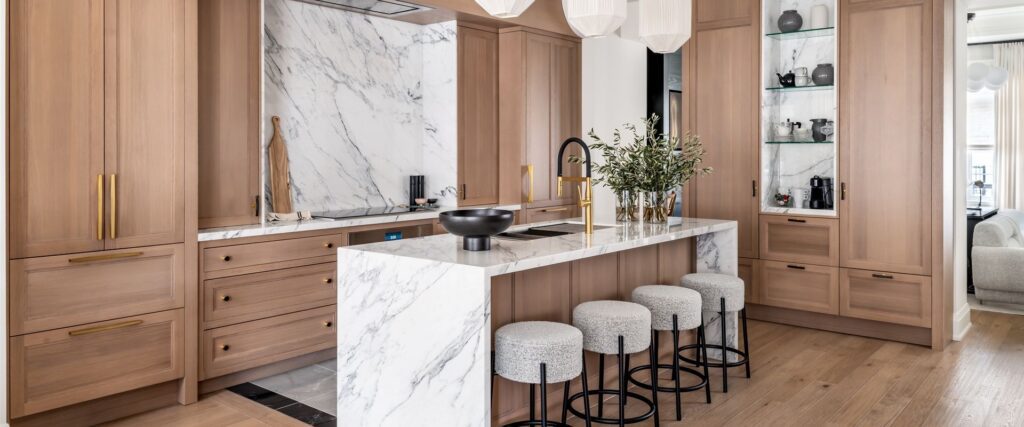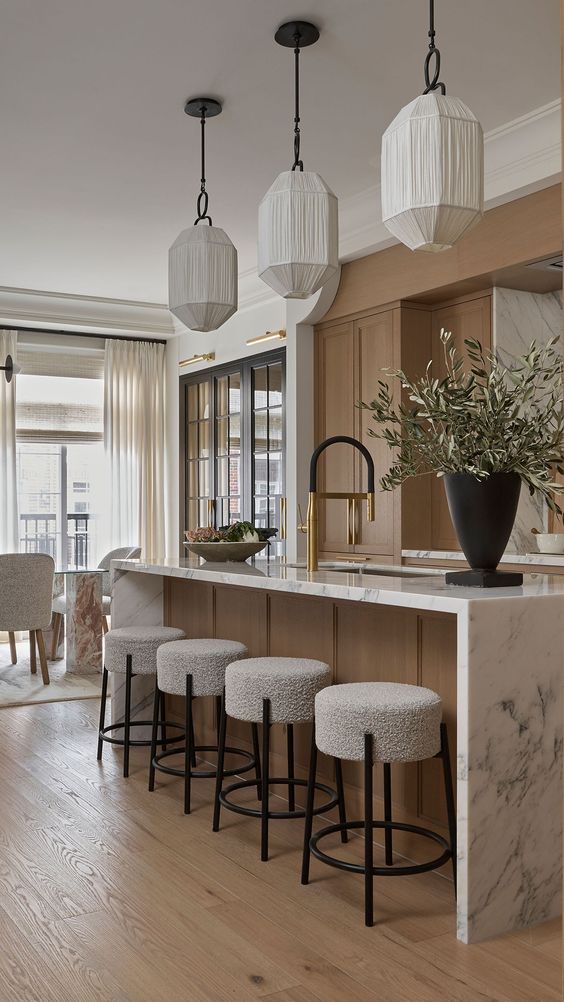Design Tips from a Vancouver Designer

Designing a dream home can be an exciting and overwhelming task. From choosing the perfect color scheme to selecting the right furniture pieces, there are countless decisions to make. That’s why it’s always helpful to get some expert advice. If you’re looking to create a space that not only looks beautiful but also feels like home, you’re in luck. In this article, we’ll be sharing some tips and tricks that we have been using for years to help clients design their dream homes. From understanding your personal style to incorporating functional elements into your design, we’ve got you covered. So, whether you’re starting from scratch or looking to revamp your existing space, keep reading to learn how to create a home that you’ll love for years to come.
Defining Your Style and Needs
Before you start designing your dream home, it’s important to have a clear idea of your personal style and needs. Do you prefer a modern or traditional look? Are you looking for a cozy and intimate space or a grand and spacious one? Answering these questions will help you narrow down your options and make informed decisions.
It’s also important to consider your lifestyle and needs. Do you have children or pets? Do you work from home? Do you love to entertain? These factors will influence your design choices, such as the type of flooring, furniture, and lighting you choose.
When defining your style and needs, it’s helpful to create a mood board or Pinterest board to gather inspiration and ideas. This will also help you communicate your vision to your interior designer and any other professionals involved in the design process.
Creating a Budget and Timeline
Creating a budget and timeline is an important step in the design process. You don’t want to overspend or miss important deadlines, which can lead to stress and frustration.
Start by determining your budget and what you can realistically afford. This will help you prioritize your design choices and avoid overspending. It’s also important to factor in additional costs, such as taxes, delivery fees, and installation fees.
Once you have a budget in mind, create a timeline for your project. This will help you stay on track and ensure that everything is completed on time. Be sure to factor in any lead times for materials and furniture, as well as any unexpected delays.
Working with an Interior Designer
Working with an interior designer can help take the stress out of the design process. A designer can help you define your style, plan out a realistic budget and timeline, create a cohesive design plan, communicate with the construction team, and source materials and furniture.
When choosing an interior designer, it’s important to do your research. Look for designers who have experience in the type of design you’re looking for and who have a portfolio that aligns with your style. You should also consider their communication style and whether they are a good fit for your personality and needs.
Space Planning and Layout
Space planning and layout are key components of a successful home design. You want to create a space that is functional and flows well.
Start by assessing your space and determining how you want to use it. For example, if you love to entertain, you may want to create a separate space for dining and seating. If you work from home, you may need a dedicated workspace.
Once you have a clear idea of how you want to use your space, create a floor plan. This will help you visualize how everything will fit together and ensure that there is enough room for furniture and circulation.
Wellness and Sustainability Options
In recent years, there has been a growing interest in wellness and sustainability in home design. Many homeowners are looking for ways to create a healthy and eco-friendly space that promotes well-being. There are many ways to incorporate wellness and sustainability into your home design.
One way is to choose materials that are natural and non-toxic. For example, you can opt for hardwood flooring instead of carpet, which can trap dust and allergens. You can also choose zero-VOC (volatile organic compounds) paint and finishes, which emit fewer harmful fumes. Another way to promote wellness in your home is to incorporate plants, which can help purify the air and reduce stress levels.
Sustainability is also a growing concern for many homeowners. There are many ways to make your home more eco-friendly, such as using energy-efficient appliances and fixtures, installing solar panels, and using recycled materials. You can also consider using materials that are locally sourced to reduce transportation emissions.
Selecting Materials and Finishes
Selecting materials and finishes is one of the most exciting parts of the design process. It’s where you get to choose the colors, textures, and patterns that will bring your space to life.
When selecting materials and finishes, consider your personal style and needs. For example, if you have pets or children, you may want to choose durable materials that are easy to clean. If you love a cozy and warm atmosphere, you may want to opt for soft and plush fabrics.
It’s also important to consider the overall color scheme of your space. You want to choose materials and finishes that complement each other and create a cohesive look.
Choosing Colors and Patterns
Choosing colors and patterns can be overwhelming, but it doesn’t have to be. Start by considering the mood and atmosphere you want to create. Do you want a calm and serene space or a bold and vibrant one?
Once you have a clear idea of the mood you want to create, choose a color scheme that reflects it. You can opt for a monochromatic scheme, which uses different shades of the same color, or a complementary scheme, which uses colors that are opposite each other on the color wheel.
When it comes to patterns, choose ones that complement your color scheme and add visual interest. You can mix and match patterns, but be sure to choose ones that are in the same color family and scale.
Lighting and Electrical Considerations
Lighting and electrical considerations are often overlooked in the design process, but they are crucial for creating a functional and inviting space.
Start by assessing your space and determining where you need lighting. For example, you may need task lighting in your workspace or accent lighting in your living room. You can also incorporate dimmer switches to create different moods and atmospheres.
When it comes to electrical considerations, consider your technology needs. Do you need outlets for charging devices or a home theater system? Be sure to factor these into your design plan.
Technology and Smart Home Features
Technology and smart home features are becoming increasingly popular in home design. They can make your life easier and more convenient, and also add value to your home.
Consider incorporating smart home features such as a smart thermostat, lighting control, and security system. You can also opt for built-in speakers or a home theater system.
When incorporating technology into your design plan, be sure to factor in the wiring and connectivity needs. You want to ensure that everything is installed properly and works seamlessly.
Furniture and Decor Selection
Furniture and decor selection is the final step in the design process. It’s where you get to add the finishing touches that bring your space to life.
When selecting furniture, consider your personal style, needs, and budget. You want to choose pieces that are both functional and beautiful. It’s also important to consider the scale and proportion of your space, as well as the flow and circulation.
When it comes to decor, choose pieces that complement your color scheme and add visual interest. You can opt for artwork, rugs, pillows, and other accessories.
Conclusion
Designing a dream home can be a fun and rewarding experience with the right guidance and planning. From wellness and sustainability options to furniture and decor selection, there are many factors to consider. Remember to define your personal style and needs, create a budget and timeline, and work with an interior designer to reduce your stress and ensure a smooth process. With these tips and tricks, you can create a space that not only looks beautiful but also feels like home.

Designing your dream home is a thrilling journey, and these expert tips make it a breeze.